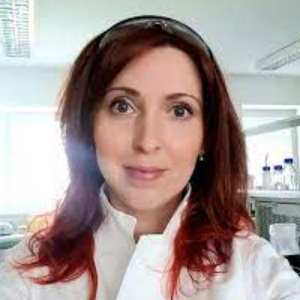Title : Potentiation of cytotoxic action of the new cisplatin derivative by UV irradiation
Abstract:
Platinum complexes such as cisplatin [cis-diamminedichloridoplatinum(II)] and its analogues are widely used as very effective chemotherapeutic agents. The anticancer activity of these drugs is related to the hydrolytic release of the labile leaving ligands with concomitant generation of active monoaqua and/or diaquaplatinum(II) species that are able to bound nuclear DNA and effectively inhibit transcription machinery. However, the use of these drugs in clinical practice is limited by a number of side effects and their effectiveness in cancer therapy is limited by the acquired resistance. These limitations are impetus for the development of new platinum compounds with lower toxicity which can be activated by light selectively in the target cancer cells. Among platinum photoactivatable compounds, platinum(IV) prodrugs containing azide ligands have attracted great attention. Besides Pt(IV), biological properties of platinum(II) compounds have ben also shown to be affected by irradiation with either UV or visible light. The cytotoxic effect of antitumor ineffective transplatin can be also enhanced by UVA irradiation. In contrast to transplatin, the biological action of cisplatin is not affected by irradiation with UVA or visible light. In this study the cytotoxic activity of the new cisplatin analogue bearing a nonleaving 1-methyl-7- azaindole ligand cis-[PtCl2(NH3)(1M7AI)] (1M7AI = 1-methyl-7-azaindole, complex 1) was investigated. The mechanism of its cytotoxicity on molecular or cellular level was tested as well. Compound 1 was cytotoxic in all cell lines tested including cisplatin resistant A2780 cells and also in MCF-7 cells (inherently resistant to cisplatin). This complex 1 showed selectivity for tumor cells relative to the nontumorigenic, normal cells comparable with cisplatin. The results also indicate that the cytotoxicity of cis-[PtCl2(NH3)(1M7AI)] can be substantially potentiated by UV A and that the mechanism underlying this effect involves Pt-DNA adducts rearrangement as well as ROS generation and DNA cleavage.
Takeaway Notes:
The findings of the present work help to explain the different cytotoxic effects of photoactivated 1 and conventional cisplatin and thereby provide new insights into mechanisms associated with the antitumor effects of platinum complexes photoactivated by UVA and visible light.



